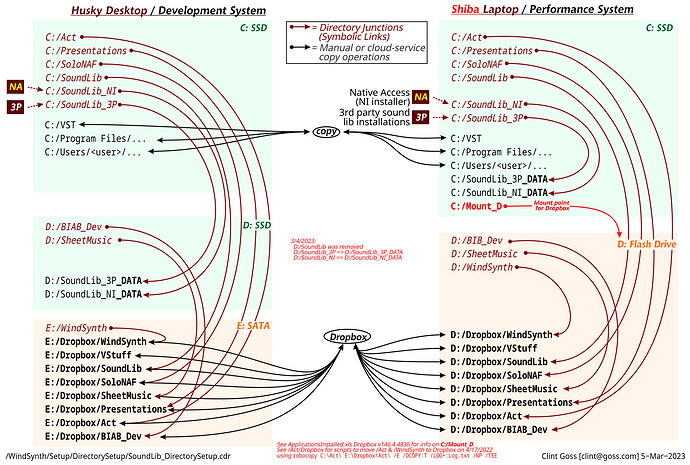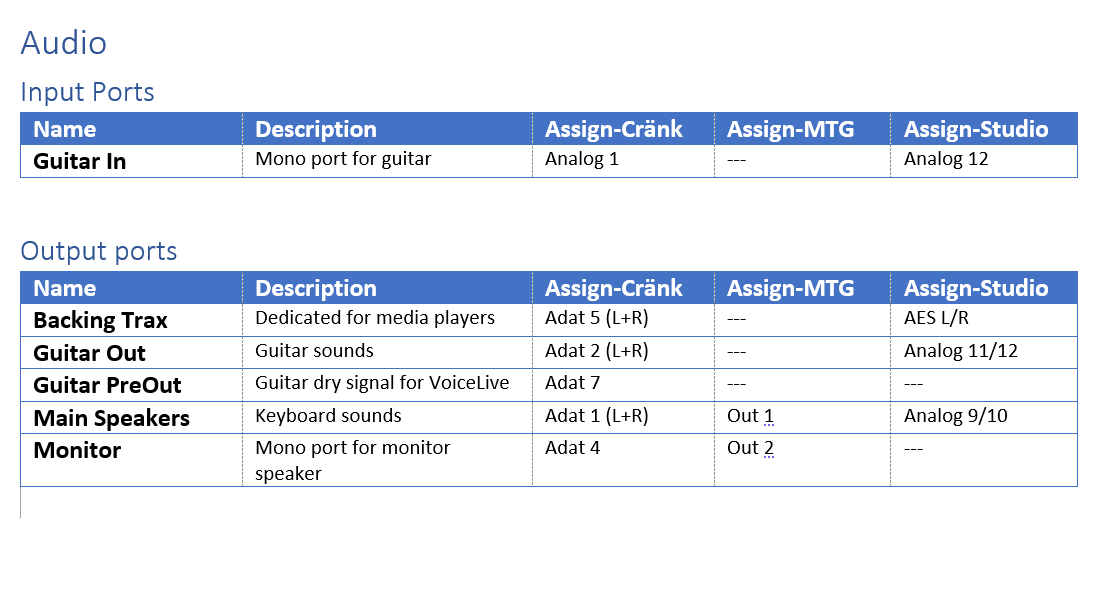I’m having an issue because I have various setup scenarios:
- four different computers that can run C4,
- four possible interfaces (RME Babyface, UCX2, UFX2 as well as Windows ASIO as a fallback),
- four Cantabile Configurations (Setups), and
- numerous rig designs.
I frequently change computers and rig designs (sometimes while in the car from a rehearsal to a gig) …
The issue: if a C4 song developed in one C4 Configuration (e.g. CFG-A) is opened in
another C4 Configuration (e.g. CFG-B), then any C4 routes involving a C4 port that are Enabled in CFG-A but Disabled in CFG-B will disappear in the Wiring view of the Routing diagram when I change from CFG-A to CFG-B.
In the Table View of the Routing, the route is marked as “[Port Name] (missing)”.
Things generally work out in Cantabile. When I move back from CFG-B to CFG-A, those missing routes are preserved and restored. However, I cannot work with those routes in CFG-B.
The cure: I establish the PORT COMPATIBILITY rule:
If a Cantabile Port is Enabled in any C4 configuration,
it is Enabled in all C4 configurations.
I Enable the Cantabile port in CFG-B, but all channels are set to (unassigned).
Instead of setting ports like this:
[MyDevice In]
CFG-A Analog 3/4 Input port for MyDevice.
CFG-B DISABLED MyDevice not used in this configuration ... or ...
Analog 3/4 does not exist in this configuration.
… they are set up like this:
[MyDevice In]
CFG-A Analog 3/4 Input port for MyDevice.
CFG-B ENABLED (unassigned) MyDevice not used in this config, but
enabled for PORT COMPATIBILITY.
Love to hear any thoughts folks might have …
… although this situation is pretty far afield of how most Cantabile users have designed their setups …




